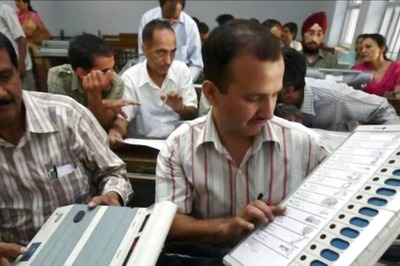
views
The absence of a weather system that brings rains, and hot winds blowing in from Pakistan could have been the reasons behind the unusually high temperatures in many Himalayan areas and hilly regions of north India on Thursday, experts said. Drass in Ladakh, which is one of the coldest places in the country and where the temperature drops to below minus 20 degrees Celsius, had recorded 22.6 degrees Celsius.
Several parts of north India are witnessing heatwave to severe heatwave conditions. In Himachal Pradesh, Una recorded 42.5 degrees Celsius, a departure of seven degrees Celsius from the normal, while Solan recorded 35.5 degrees Celsius, a departure of six degrees Celsius from the normal, according to an India Meteorological Department (IMD) bulletin issued on Thursday.
Ladakh is also witnessing a heatwave. Drass recorded 22.6 degrees Celsius and Thoise in Nurba 31 degrees Celsius. The temperature in Stakna was 25.8 degrees Celsius, in Leh 25.7 degrees Celsius, in Kargil 28.5 degrees Celsius and at Base Camp 23.4 degrees Celsius, it said.
The north Indian plains usually record heatwave to severe heatwave conditions in pre-monsoon days. Such conditions are also sometimes witnessed in hilly areas. When asked about the above normal temperatures in the usually cold Himalayan areas, IMD Director General Mrutunjay Mohapatra said it is not unusual for these areas to witness a heatwave.
However, temperatures recorded in these areas are not normal, he said. Mohapatra said the region is already witnessing a weak monsoon. This has pushed the temperature above normal.
Jammu and Kashmir, Ladakh, Assam and Arunchal Pradesh are known to record their maximum temperatures in June-July, he said. Naresh Kumar, who is a scientist at the IMD working on heatwave, said the probable reasons pushing temperatures in the Himalayan region above normal could be hot winds from Pakistan.
He said if the winds are flowing in the higher level at five to six kilometres, then there is a possibility that this could be the reason behind the current heatwave in hilly areas. These winds have been one of the reasons behind the rising mercury in the plains, Kumar said.
The IMD on Thursday had issued a heatwave warning for the next two days. "Due to likely dry westerly/southwesterly winds from Pakistan to northwest India at lower levels, heatwave conditions in isolated/some pockets over Punjab, Haryana, Chandigarh and Delhi, north Rajasthan, Uttar Pradesh and north West Madhya Pradesh during next two days," it had said.
Vice president Skymet Weather Mahesh Palawat said Ladakh records scanty rainfall and there is currently no active weather system to bring moisture to north India. The region sees precipitation due to western disturbance during the non-monsoon months, he said, noting that this is coupled with no cloud cover and sun insolation.
Read all the Latest News, Breaking News and Coronavirus News here.




















Comments
0 comment